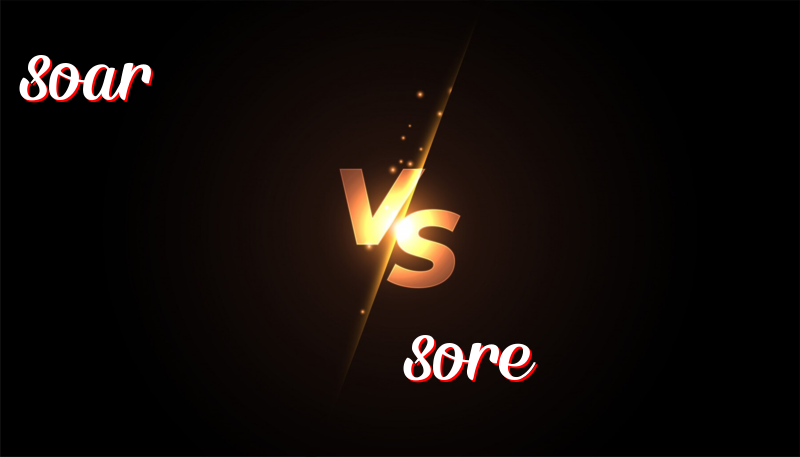Soar versus Sore: Understanding the Difference
Soar vs. Sore
History:
The word “soar” comes from the Old French word “essorer” meaning to rise or fly. On the other hand, “sore” has origins in Old English and Dutch, meaning painful or tender.
How to use them:
– “Soar” is a verb that means to fly high in the air or to rise quickly to a great height.
– “Sore” is an adjective used to describe a feeling of pain or discomfort.
Trick to Remember the Difference:
Think of an eagle soaring high in the sky when you see the word “soar,” which has an “o” like a bird’s outstretched wings. “Sore,” on the other hand, has an “o” like a mouth in pain.
Examples of “Soar”:
1. The kite began to soar above the trees.
2. Her spirits soared when she received a good grade.
3. Prices of houses in the area are starting to soar.
4. His confidence continued to soar after each success.
5. The sun will soon soar in the sky, bringing warmth.
Examples of “Sore”:
1. His throat was sore after shouting at the game.
2. Her feet were sore from walking all day.
3. The bruise on his arm was sore to touch.
4. She winced in pain as the sore spot was pressed.
5. After working out, his muscles felt sore and tired.
Summary:
“Soar” is about flying high or rising quickly, while “sore” is all about pain or discomfort. So remember, when something is flying high, it’s “soar,” and when something hurts, it’s “sore.”

Leave a Reply
You must be logged in to post a comment.